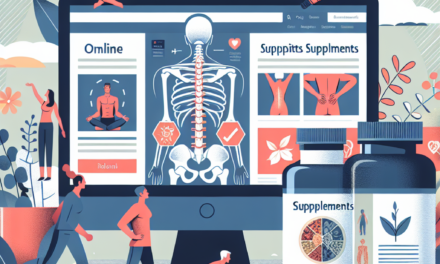Revolutionizing Infusion Therapy: The Impact of Medical Technology on IV Hydration
Infusion therapy has long been a cornerstone of modern medicine, providing essential fluids, medications, and nutrients directly into a patient’s bloodstream. As medical technology continues to evolve, the landscape of intravenous (IV) hydration is undergoing a significant transformation. This article explores the various ways in which advancements in medical technology are revolutionizing infusion therapy, enhancing patient care, and improving clinical outcomes.
1. The Evolution of Infusion Therapy
Infusion therapy has a rich history that dates back to the early 20th century. Initially, the process was rudimentary, relying on gravity to deliver fluids through simple glass bottles. Over the decades, significant advancements have been made, leading to the sophisticated systems we see today.
In the early days, healthcare providers faced numerous challenges, including:
- Inconsistent flow rates
- Infection risks from non-sterile equipment
- Limited monitoring capabilities
With the introduction of electronic infusion devices (EIDs) in the 1980s, the landscape began to change. These devices allowed for precise control over flow rates and volumes, significantly reducing the risk of complications. Today, infusion therapy encompasses a wide range of applications, from hydration and nutrition to chemotherapy and pain management.
Recent innovations have further transformed the field, including:
- Smart infusion pumps with integrated safety features
- Telehealth solutions for remote monitoring
- Wearable technology for continuous hydration
As we delve deeper into the impact of medical technology on IV hydration, it is essential to understand how these advancements are shaping patient care and outcomes.
2. Smart Infusion Pumps: Enhancing Safety and Precision
Smart infusion pumps represent one of the most significant advancements in infusion therapy. These devices are designed to deliver fluids and medications with a high degree of accuracy, minimizing the risk of human error.
Key features of smart infusion pumps include:
- Automated drug libraries that provide dosing guidelines
- Real-time monitoring of infusion rates and volumes
- Alerts for potential medication errors or adverse reactions
According to a study published in the Journal of Patient Safety, the implementation of smart infusion pumps has led to a 50% reduction in medication errors related to IV therapy. This is particularly crucial in high-risk settings such as intensive care units (ICUs), where patients often require complex medication regimens.
Case studies have demonstrated the effectiveness of smart infusion pumps in various clinical settings. For instance, a hospital in California reported a significant decrease in adverse drug events after integrating smart pumps into their infusion protocols. The hospital’s nursing staff noted that the pumps’ built-in safety features allowed them to focus more on patient care rather than manual calculations and monitoring.
Moreover, smart infusion pumps can be integrated with electronic health records (EHRs), allowing for seamless data sharing and improved communication among healthcare providers. This integration enhances the overall efficiency of infusion therapy and contributes to better patient outcomes.
3. Telehealth and Remote Monitoring: Expanding Access to IV Hydration
The rise of telehealth has transformed the way healthcare is delivered, particularly in the realm of infusion therapy. Remote monitoring technologies enable healthcare providers to oversee patients’ hydration needs without requiring them to visit a healthcare facility.
Telehealth solutions for IV hydration include:
- Mobile apps for patient self-monitoring
- Wearable devices that track hydration levels
- Video consultations for real-time assessments
A study published in the Journal of Telemedicine and Telecare found that patients receiving remote monitoring for IV hydration reported higher satisfaction levels and better adherence to treatment plans. This is particularly beneficial for patients with chronic conditions who require ongoing hydration therapy.
For example, a patient with congestive heart failure may need regular IV hydration to manage fluid balance. Through telehealth, healthcare providers can monitor the patient’s condition remotely, adjusting treatment as needed without requiring frequent hospital visits. This not only improves patient convenience but also reduces healthcare costs associated with unnecessary hospitalizations.
Furthermore, telehealth can play a crucial role in emergency situations. During the COVID-19 pandemic, many healthcare facilities adopted telehealth solutions to provide IV hydration therapy to patients in isolation. This approach ensured that patients received necessary care while minimizing the risk of virus transmission.
4. Wearable Technology: The Future of Continuous Hydration
Wearable technology is rapidly gaining traction in the healthcare sector, and its application in IV hydration is particularly promising. Devices that monitor hydration levels and deliver fluids on demand are being developed to enhance patient care.
Key benefits of wearable technology for IV hydration include:
- Continuous monitoring of hydration status
- Automated delivery of fluids based on real-time data
- Improved patient compliance and engagement
For instance, researchers at a leading university have developed a prototype wearable device that can assess a patient’s hydration levels through skin sensors. The device communicates with a smart infusion pump to deliver fluids as needed, ensuring optimal hydration without the need for constant manual intervention.
Case studies have shown that patients using wearable hydration technology experience improved outcomes. In a clinical trial involving athletes, participants who used a wearable hydration monitor were able to maintain optimal fluid levels during intense training sessions, leading to enhanced performance and reduced risk of dehydration-related injuries.
As wearable technology continues to evolve, it holds the potential to revolutionize IV hydration therapy, making it more accessible and efficient for patients across various demographics.
5. The Role of Artificial Intelligence in Infusion Therapy
Artificial intelligence (AI) is making significant inroads into healthcare, and its application in infusion therapy is no exception. AI algorithms can analyze vast amounts of data to optimize infusion protocols and improve patient outcomes.
Key applications of AI in infusion therapy include:
- Predictive analytics for identifying patients at risk of dehydration
- Personalized infusion plans based on individual patient data
- Automated adjustments to infusion rates based on real-time monitoring
A study published in the Journal of Medical Internet Research demonstrated that AI-driven infusion protocols led to a 30% reduction in fluid overload incidents among critically ill patients. By analyzing patient data, AI algorithms can identify trends and make recommendations for optimal fluid management.
For example, an AI system can analyze a patient’s vital signs, lab results, and medical history to determine the appropriate fluid volume and rate for IV hydration. This personalized approach not only enhances patient safety but also improves overall treatment efficacy.
Moreover, AI can assist healthcare providers in decision-making by providing evidence-based recommendations for medication dosing and infusion rates. This is particularly valuable in complex cases where multiple medications are administered simultaneously.
Conclusion
The impact of medical technology on IV hydration is profound and far-reaching. From smart infusion pumps that enhance safety and precision to telehealth solutions that expand access to care, these advancements are revolutionizing infusion therapy. Wearable technology and artificial intelligence are paving the way for continuous monitoring and personalized treatment plans, ensuring that patients receive the best possible care.
As we look to the future, it is clear that the integration of technology in infusion therapy will continue to evolve, improving patient outcomes and enhancing the overall healthcare experience. The ongoing research and development in this field hold great promise for the next generation of infusion therapy, making it safer, more efficient, and more accessible for all patients.
In summary, the revolution in infusion therapy driven by medical technology is not just about improving devices; it is about transforming patient care and outcomes. As healthcare providers embrace these innovations, the future of IV hydration looks brighter than ever.





